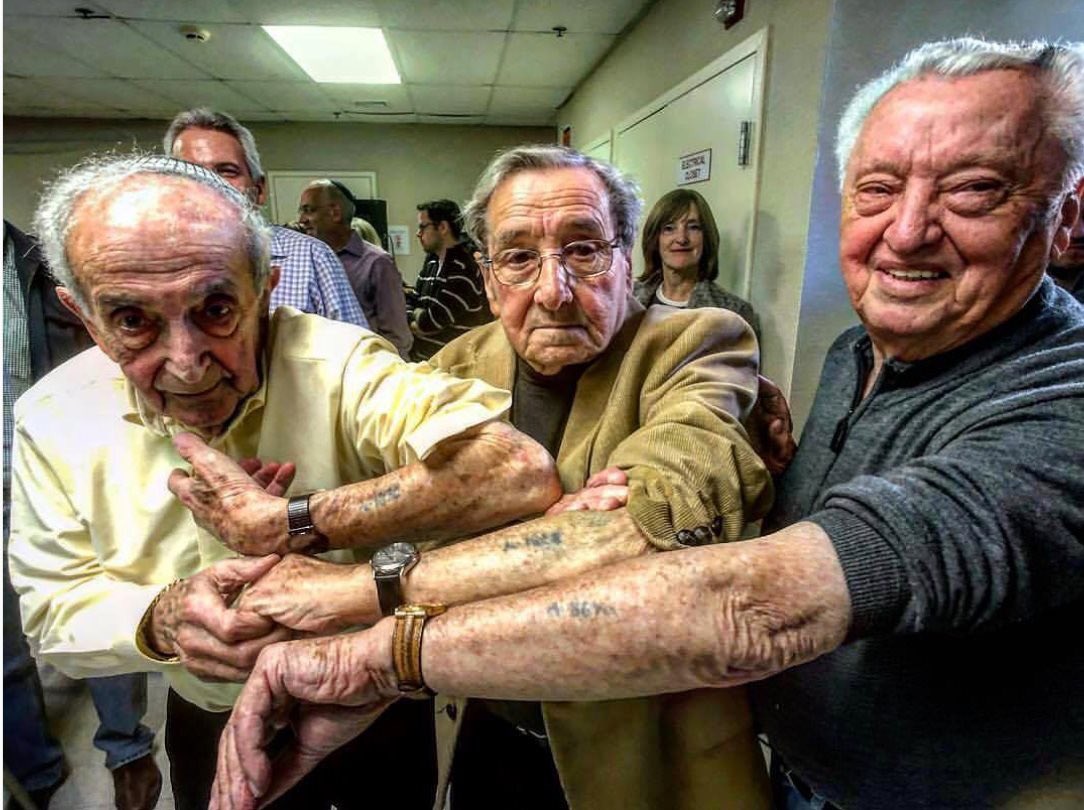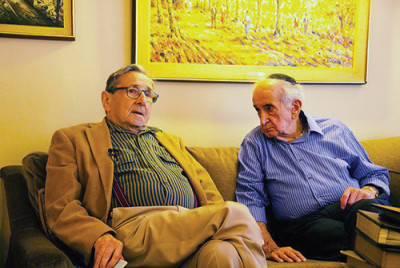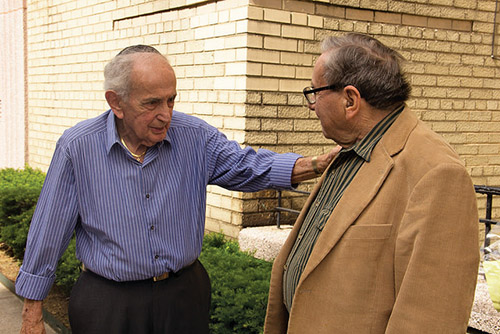- Good Stuff -
- 4mins -
- 4,625 views
Holocaust survivors in same line at Auschwitz meet for the first time 72 years later
Werner Reich and Walter Spier, both 89, were held captive in Auschwitz in 1944. Their tattoos are just 10 numbers apart, meaning they were in the same line. They were in the same 3 concentration camps, Terezin, Auschwitz, on the death march and Mauthausen, from where they were finally liberated.
Holocaust Survivors in Same Line at Auschwitz Finally Meet 72 Years Later
Walter Spier and Werner Reich are survivors of Auschwitz. The two bear the infamous tattoos the Nazis placed upon the forearms of inmates. Their numbers: A 1838 and A 1828. That’s right—Walter and Werner were just 10 numbers apart, yet they never met or even knew of each other until a Kristallnacht commemoration in late 2017.

Shared Holocaust experiences led Walter and Werner to feel an instant connection when they first met
On Sunday, 12 November, 2017, Congregation Ahavat Achim of Fair Lawn and Beth Tefillah of Paramus brought the two Holocaust survivors together as part of a Kristallnacht commemoration. The free program, which included breakfast, was titled “Ten Numbers Apart”. The program began with a candle-lighting ceremony for the six million who perished, and features survivors and second-generation survivors. After the candle-lighting, Arnie Spier (Walter’s son) presented questions to Walter and Werner about their Holocaust experiences.
Walter Spier—along with his parents, grandmother and brother—spent 22 months in Terezin. His grandmother died there. The others were then sent to Auschwitz where Walter’s parents were murdered upon arrival. Walter, who was separated from his brother, was sent to Sosnowiec concentration camp and was eventually put on a death march to Mauthausen. He was ultimately liberated by United States forces on 5 May, 1945.
After being arrested by the Gestapo in 1943, Werner was jailed and taken to Terezin. From there, he was sent to Auschwitz II. He went through three selections by Dr. Mengele and was later transferred to Auschwitz I. In January 1945, he went on a seven-day death march that ended with frozen-off toes in Mauthausen. He also was liberated on 5 May, 1945.
Those shared Holocaust experiences led Walter and Werner to feel an instant connection when they first met. The two men schmoozed as if they were long-lost friends. Upon meeting Werner for the first time, Walter said, “We were together—just 10 people apart. We took the same steps and suffered the same. We felt more close than friends.”
Werner felt the bond as well. “I felt at ease. We were the only people in the room who knew what the Holocaust was. The others looked at it with a certain abstraction, like people looking at the battlefield of Gettysburg.”
Source: JewishLink.News

Walter and Werner each have been speaking publicly about the Holocaust for years
As Kristallnacht (which Walter views as the unofficial start of the Holocaust) and the Holocaust fade further into history, the number of survivors is dwindling. For Arnie, this fact inspires him to host events such as this one. “We must honor these heroes like my dad and Werner and let people hear their firsthand stories so they can teach to the next generation,” he said. “There is no better way to learn history than a firsthand account.”
Walter and Werner each have been speaking about the Holocaust for years. Werner keeps a busy schedule and recently spoke in Portugal. “My main purpose in speaking is to make sure that people stop being bystanders,” said Werner.
For Walter, speaking about the Holocaust did not come naturally. According to Arnie, his father spoke very little of the Holocaust, other than general stories, when he and his siblings were growing up. “It was not until he had grandchildren that he felt an obligation to tell future generations. It started with his interview with Spielberg’s Shoah Foundation and his talking to students in the U.S. and Germany,” he said.
One inspiration for Walter to speak of the Holocaust came from Rabbi Yisrael Meir Lau. “Many years ago, I heard Rabbi Lau speak. Before he started, he said, ‘If you expect a speech in 20 minutes, you might as well leave, because you can’t tell a story in 20 minutes.’” Rabbi Lau, a survivor himself, said, “He kept you alive so you should tell people what went on.”
Since then, Walter has spoken about his Holocaust experiences many times, but it is always emotional. Recently, he spoke at a yeshiva high school in Manhattan. Originally, he was told he had 20 minutes, but when he said it was impossible, he was given 40 minutes. Walter said, “At the end of the period, the bell rang and the kids didn’t move. They kept asking questions.” He described another speaking engagement at a school in Yonkers. “The kids did not move for an hour. The principal said it is tough to keep these kids quiet and asked me if I would come back.”
Source: JewishLink.News



